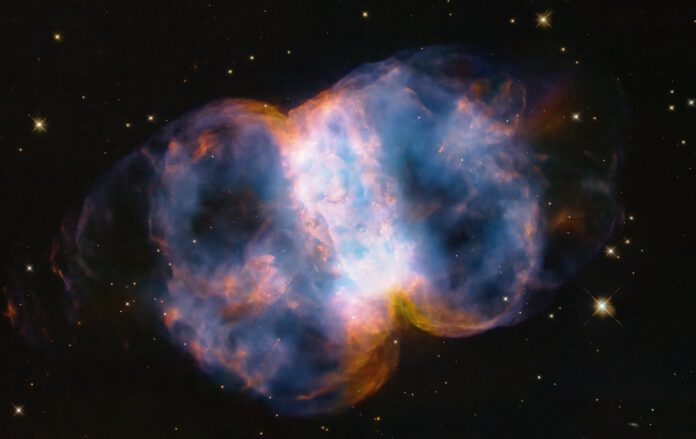
Did you know that over half of the world’s population is younger than the Hubble Space Telescope?
Quite remarkably, more than half of humanity is younger than the famous Hubble Space Telescope. Despite its age, this beloved star-gazer is by no means ready to retire. On its 34th birthday, we celebrated with a stunning image of the Little Dumbbell Nebula.
The Little Dumbbell Nebula (M76)
The Little Dumbbell Nebula, also known as M76, is a planetary nebula located in the Perseus constellation. This nebula is 3,400 light-years away from Earth. At the heart of the nebula is a dying star, specifically a red giant that is transforming into a white dwarf. The surface temperature of this star is approximately 120,000 degrees Celsius, making it up to 24 times hotter than the sun. If you look closely, you can see the dying star as a tiny speck of white at the center of the nebula.
View from Earth
From our Earthly perspective, we are observing the nebula from the edge of the ring, which represents the thick structure in the middle. If we could see it front on, the Little Dumbbell Nebula would rather look like the Ring Nebula. A major advantage of our current perspective is the clear visibility of two gas lobes to the left and right of the ring. These “bubbles” are pushed outwards at a speed of more than three million kilometers per hour.
Visible for a limited time only
The Little Dumbbell Nebula has a relatively short life span. It is predicted to disappear in about 15,000 years. While this might seem like a long time, in cosmic terms, it’s a blip. To give it some perspective, our universe is around 13.7 billion years old, while our solar system has been around for 4.6 billion years.











